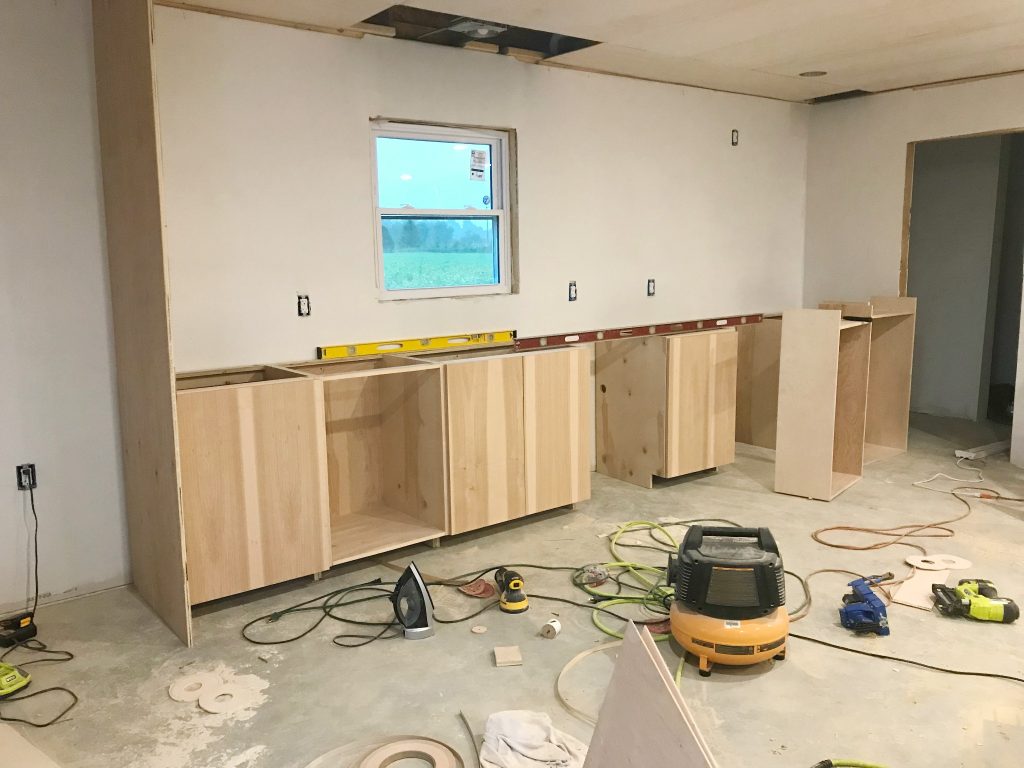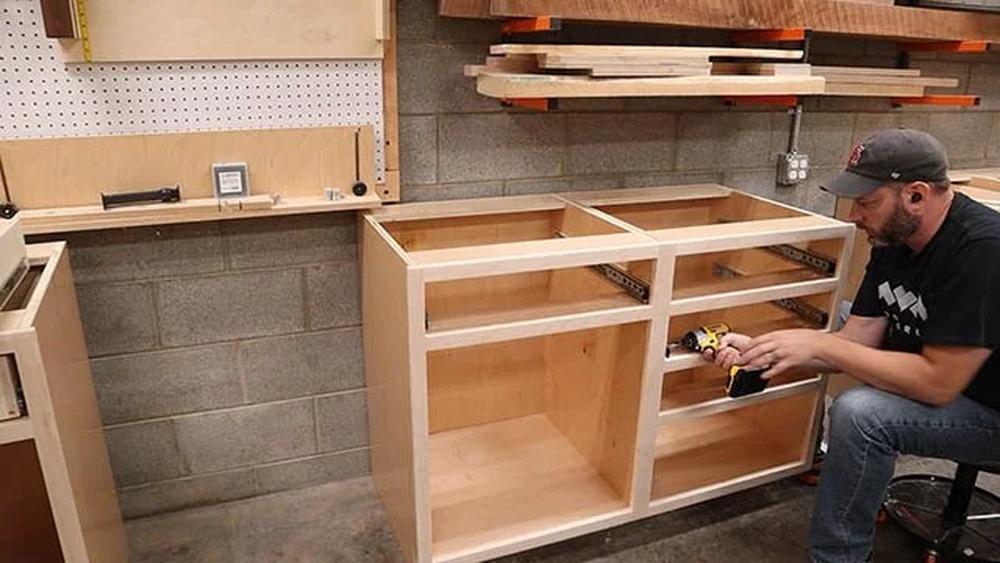Thinking about upgrading your kitchen with new cabinets? You might be wondering, “How do I build kitchen cabinets?” Building your own cabinets can save you money, give you full control over the design, and let you create something truly unique for your home.
But it’s not just about saving cash—you get the satisfaction of crafting something with your own hands. In this guide, you’ll discover simple, clear steps to build sturdy, beautiful kitchen cabinets that fit your space perfectly. Whether you’re a beginner or have some woodworking experience, this article will walk you through everything you need to know to get started and finish strong.
Ready to transform your kitchen and impress yourself with your skills? Let’s dive in!
Planning Your Kitchen Cabinets
Start by measuring your kitchen space carefully. Measure the width, height, and depth of the areas for your cabinets. Write down every number. Check for any obstacles like pipes or vents.
Choose cabinet styles that fit your kitchen’s look. Popular styles include shaker, flat-panel, and raised-panel. Pick one that matches your taste and budget. Think about how you want the doors and drawers to open.
Select materials like plywood or solid wood for strength. Consider the finish and color too. Gather the right tools such as a saw, drill, clamps, and screws. Having the right tools makes the work easier and safer.

Preparing For Construction
Gathering supplies is the first step to build kitchen cabinets. You need wood panels, screws, nails, hinges, and handles. Also, get sandpaper, wood glue, and paint or stain. Having the right tools like a saw, drill, screwdriver, and measuring tape is very important.
Setting up your workspace makes the job easier and safer. Choose a clean, flat area with good light. Organize your tools and materials near you. Keep your workspace free of clutter to avoid accidents.
Safety is very important while building cabinets. Always wear safety glasses and gloves. Use ear protection if using loud tools. Keep a first aid kit nearby. Work slowly and carefully to avoid mistakes and injuries.
Cutting Cabinet Components
Start by measuring and marking the side panels and shelves carefully. Use a table saw or circular saw to cut each piece to size. Keep the edges smooth by sanding them after cutting. Accuracy here is key for a good fit later on.
For face frames, cut the stiles and rails to length. Join them with wood glue and clamps, ensuring all corners are square. Using a pocket hole jig or dowels can help make strong joints.
Trim the doors and drawer fronts to size after cutting the panels. Sand edges to remove any rough spots. Proper trimming helps the doors and drawers open and close smoothly.

Assembling The Cabinet Boxes
Start by joining the side panels using screws or nails. Make sure the edges line up evenly for a strong frame. Next, secure the bottom panel inside the frame. Use screws and check that it fits tightly. Attach the back panel with nails or screws to add stability.
Check the cabinet box for square corners. Use a carpenter’s square or measure diagonally. Both diagonal lengths should be the same. If not, adjust the panels until the box is perfectly square. This step ensures the cabinet will fit well and hold shelves properly.
Building Doors And Drawers
Start with door frames made from sturdy wood. Cut the pieces to size and join them using wood glue and screws. Use clamps to hold the frame tight until dry. Make sure corners are square for a neat fit.
Attach door panels by fitting thin plywood or solid wood inside the frame groove. Secure panels with small nails or glue. This keeps the panel flush and strong within the frame.
For drawer boxes, cut sides, front, back, and bottom panels. Join sides to front and back with screws or nails. Slide the bottom panel into the groove to complete the box. Sand edges smooth to avoid splinters and ensure easy movement.
Finishing Touches
Sanding smooths the wood surface and removes rough spots. Use fine-grit sandpaper for the best finish. Wipe away dust with a clean cloth before staining or painting.
Stain brings out the natural wood grain and adds color. Apply with a brush or cloth, then wipe off excess. For paint, use a primer first, then apply two thin coats for even coverage.
Hardware includes knobs, handles, and hinges. Choose pieces that match your kitchen style. Attach carefully with screws, making sure doors open and close smoothly.
Installing Cabinets
Position base cabinets by marking the wall studs first. Use a level to ensure each cabinet is straight and even. Secure cabinets to the wall by screwing through the back into the studs. Check the cabinet height to keep them aligned with the countertop height. Use shims to fill any gaps between the floor and the cabinet base.
For wall cabinets, measure and mark a line on the wall at the bottom of where cabinets will hang. Attach a temporary ledger board under this line to support the cabinets during installation. Hold the cabinet on the ledger, level it, then fasten it to wall studs with screws. Work from one corner and install cabinets one by one.
Align cabinets by clamping them together at the edges. Drill pilot holes through the cabinet sides and screw them together tightly. Check that all cabinet faces are flush and level. Adjust by tightening or loosening screws as needed. This ensures a smooth, seamless look once installed.
Common Challenges
Measurement errors can cause cabinets to not fit properly. Use a reliable tape measure and double-check all dimensions before cutting. Measure twice, cut once is a good rule to follow. Mark your measurements clearly on the wood to avoid confusion during cutting.
Uneven walls may make cabinets look crooked or hard to install. Use a level to check the wall surface before attaching cabinets. Shims can help fix small gaps or uneven spots. Adjust cabinet placement to ensure a straight and stable fit against the wall.
Assembly mistakes like wrong screw placement or loose joints can weaken cabinets. Follow instructions carefully and use clamps to hold pieces while screwing. Tighten screws evenly and check stability often. Fix any loose or misaligned parts immediately to keep cabinets sturdy.
Cost Considerations
Material costs for building cabinets yourself are usually lower than buying pre-made ones. Wood, screws, and hinges can be bought for less than a full cabinet set. Pre-made cabinets include factory labor and shipping fees, which raise prices.
Investing in tools like saws, drills, and clamps is needed. These tools cost money but can be reused for future projects. Without tools, building cabinets is not possible.
Building cabinets saves on labor costs but takes many hours. Time spent cutting, assembling, and finishing can be long. For some, this time cost is worth the savings. For others, buying pre-made saves effort.

Alternatives To Building
Ready-to-assemble cabinets offer a quick and affordable option. These kits come with all parts pre-cut. Assembly usually requires only simple tools. Great for those who want decent quality without building from scratch.
Modifying stock cabinets means buying pre-made units and changing them. You can add new doors, paint, or adjust sizes. This saves time and effort compared to full custom builds. A good way to refresh your kitchen on a budget.
Hiring professionals lets experts handle the entire process. They bring skills and tools to build or install cabinets perfectly. Though more expensive, this ensures high quality and less stress. Ideal if you want the job done fast and right.
Frequently Asked Questions
Is It Cheaper To Build Your Own Kitchen Cabinets?
Building your own kitchen cabinets can be cheaper if you have tools, skills, and time. It saves labor costs and allows material control. Without experience or equipment, costs and time may increase, reducing savings.
Can A Beginner Build Cabinets?
Yes, beginners can build cabinets by following clear plans and tutorials. Basic tools and patience help ensure success.
What Kind Of Wood To Use To Build Cabinets?
Use hardwoods like maple, oak, cherry, or birch for durable, attractive cabinet construction. Plywood also offers strength and stability.
Can You Build Your Own Kitchen Cupboards?
Yes, you can build your own kitchen cupboards with basic woodworking skills, proper tools, and time. This allows customization and cost savings.
Conclusion
Building kitchen cabinets takes patience and basic skills. Start with clear plans and good materials. Measure carefully and cut pieces to fit well. Assemble the parts with screws for strong joints. Sand and finish to make cabinets smooth and durable.
Taking your time ensures better results and less waste. You can save money by doing it yourself. Enjoy the pride of creating your own kitchen storage. With practice, your skills will improve each time. Building cabinets is a rewarding project anyone can try.

Yes, working as , Food Blogger and Product Reviewer for last 6 years. Here you will get amazing deals for Smart kitchen products. I am your best source for the latest update in cooking trends. I provide insightful articles, reviews, and analysis on cutting-edge kitchen gadget. My mission is to empower readers with the knowledge they need to stay ahead in a rapidly evolving coking world. Join me as we explore the future of food technology and how it shapes our lives today and tomorrow.





